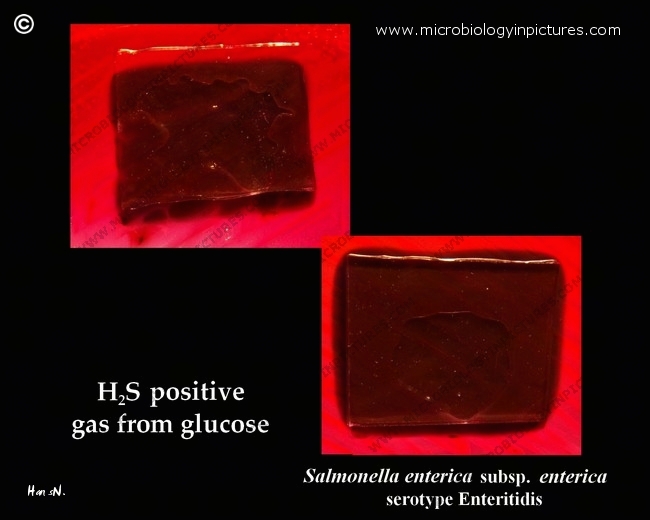
Most strains of Salmonella enterica subsp. enterica are capable of enzymatically liberate sulfur from the various sulfur-containing amino acids (methionine, cystine, cysteine), producing hydrogen sulfide gas (H2S). In this case, indicator of H2S production is lead acetate. H2S is a colorless gas which, upon contact with lead acetate, produces the sulfide of lead, a black precipitate, indicated by a visible black color reaction.
Though H2S production is typical for most Salmonella enterica subsp. enterica isolates, some serovars, e.g., Paratyphi A are H2S negative (only about 10% is positive). In serovar Choleraesuis is positive about 50% of strains.
Comparison of H2S positive and negative Salmonella isolates on TSI you can find here.
More about Salmonella serovars here.
